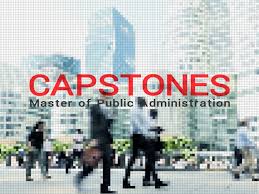The SPP blog sat down with current MPA Second Year Gayatri Mehta to discuss the social impact competition MIINT and the skills and mindset of a social impact investor.

Can you briefly explain what MIINT is?
MIINT, which stands MBA Impact Investment Network and Training, is an ‘experiential lab’ designed to give students at business and graduate schools a hands-on education in impact investing. It’s essentially an inter-university competition between teams from 25 of the top MBA and non-MBA graduate programs around the world, hosted by Bridges Impact Foundation and the Wharton School Social Impact Initiative. Teams participate in an 8-month long project that asks you to source a list of companies for potential investment, run due diligence on them and chose one to pitch to a panel made up of professionals working in the investment and social impact space.
In addition to the actual competition, the program provides online modules, video tutorials and training which give participants a deeper understanding of what environmental, social and governance (ESG) impact means and how to drive impact investment. The goal of the program is to get you to think and act like an impact investor. You learn to identify impact-driven business models, assess how investable these models may be from both an impact and commercial perspective, and understand how creating impact can move in lockstep with generating financial return.
The LSE Marshall Institute plays a tremendous role in sponsoring and supporting the LSE team throughout the competition. Bi-weekly mentorship meetings with Professor Stephan Chambers and exposure to the institution’s strong network of impact VCs, incubators and social entrepreneurs helped the team take advantage of both the ‘network’ and ‘training’ components of MIINT.
Why did you want to get involved?
Before starting the MPA I was working directly with a social enterprise in Jakarta, and I got a huge amount of satisfaction from working alongside a passionate and entrepreneurial team from within a mission-driven organisation. But what I wanted to get from MIINT was exposure to the other side of impact investing – from the perspective of the investor. Coming in as an investor, you get to work with such a wide range of passionate entrepreneurs. You quickly become exposed to various social issues, develop a broader understanding of impact, and interact closely with incredibly passionate and driven people.
MIINT was also an amazing opportunity to work closely with a mission-driven organisation in the health tech space in India. It was a space I knew very little about before the competition and it was very rewarding to be engaged so closely in this work. It was also great to have a chance to practically apply all the skills I was learning in an academic setting.
What are the main skills you learnt from MIINT?
I learnt how to ask the right questions to really understand a company. Becoming ‘one’ with the company is so important in this space. You come in as an outsider and must quickly get to grips with the company and team’s vision, their goals, their trajectory and the pillars of their business model. But while taking on the responsibility of representing the company to the panel of investors, you also have to do rigorous due diligence and present your findings in an unbiased way. Learning how to ask the right questions, in order to balance being a responsible representative of the organisation and being a responsible investor was crucial.
I also learnt how to craft interesting and meaningful narratives from the data. Through the competition we had to handle a lot of raw financial data, and it was important to be able to make sense of what the numbers were telling us. We had to sought through it, synthesise it, make a story out of it and pull it all into a compelling 10-minute presentation for the panel. This was a challenging but highly rewarding skill to develop.
The MIINT program was originally designed for MBAs – what do you think the main synergies are between MIINT and the MPA?
We were one of the only non-MBA teams. This probably put us at a slight disadvantage with regard to some of the necessary skills, but we also had a comparative advantage on how we approached the concept of impact. We were immediately able to think beyond financial return and understand more readily how to approach quantifying and thinking about social impact.
The specific MPA skill that was most useful to us was probably our econometrics training. Being able to think about quantifying policy econometrically helped us to be cautious about confusing correlation and causation, and also gave us the language of randomised control trials and quantitative evaluation.
Do you have any advice for students who want to get involved in the social impact investment space?
For those interested in getting involved in this space, it’s important to demonstrate your passion for social impact by volunteering with or working in socially responsible organizations such as benefit corporations, social enterprises, etc. It’s important to understand what an impact-driven business model looks like, especially those that simultaneously generate a financial return for the investor. Understanding how to keep return and impact in lockstep by balancing passion with commercial responsibility is how impact investors differentiate themselves from traditional VCs.
For more on MIINT, have a look at this 2016 blog post from MPA alumna, Ingrid von Schiller, or the Marshall Institute’s website.





